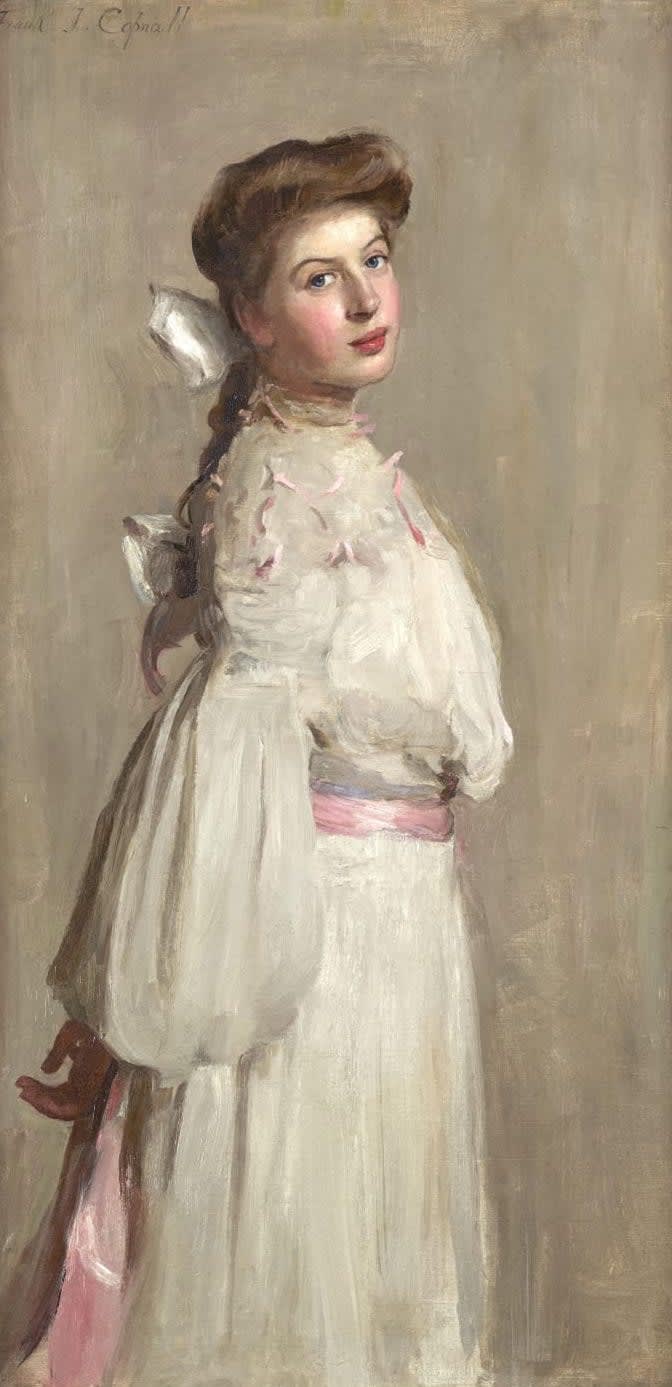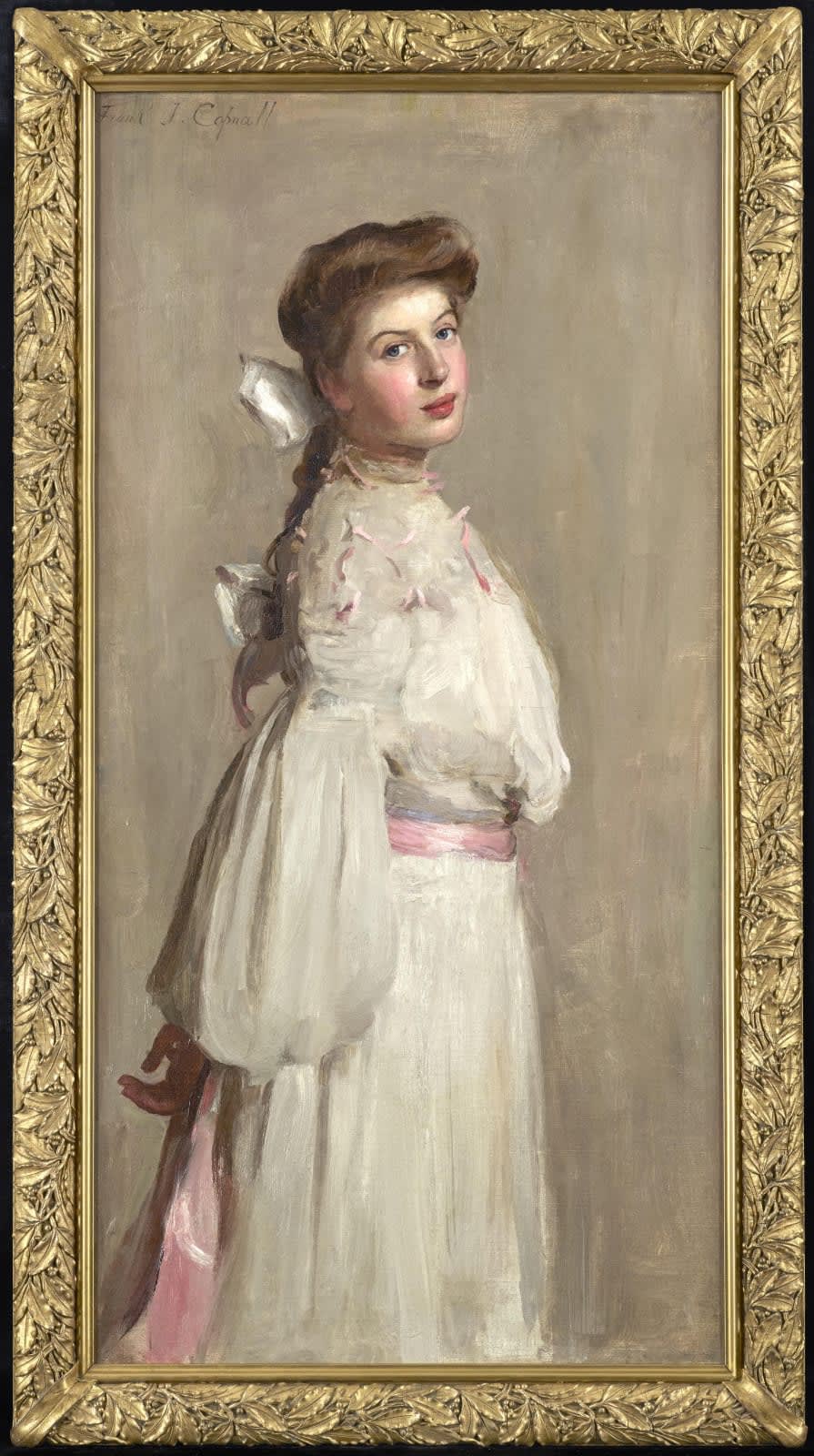

Frank T. Copnall 1870-1949
Exhibitions
London, Royal Academy, 1905
At a time when Sargent's pyrotechnics dominated portraiture at the Royal Academy, artists like Frank Copnall as well as Edward Arthur Walton eschewed flashy brushwork in favour of Whistlerian decorum. Copnall's portrait of Miss Elsa Waring (1877-1963) is an exquisite exercise in white and ivory tones featuring elegant pink accents which recall Whistler's 'Harmony in Pink and Grey: Portrait of Lady Meux' (Frick Collection, New York). Subtle and sympathetic observation of personality also characterise Copnall's treatment of Miss Elsa Waring.
Elsa Waring (1887-1963) was the younger daughter of John William Waring (1858-1913) and of Amelia Catherine née Miller (1859 - 1914). On 6 Jan 1909 she married Miles Beevor (1879-1969). She divorced in 1920, as reported by The Times on 3 June 1920: "Lieutenant-Colonel Miles Beevor, D.S.O., sued in this undefended case for a divorce from Mrs. Elsa Beevor (née Waring) on the ground of her adultery with Stanley Mayhew."
Elsa's father John William Waring was the brother of Samuel J. Waring (1860-1940) of Liverpool, who became Lord Waring, a British industrialist, public servant and benefactor. Lord Waring, "was one of the boldest businessmen of his age, more enterprising than either Selfridge or Maple. By means of a great firm and department store, Waring and Gillow, which in its heyday had branches worldwide, Waring made a fortune, almost lost it, then recovered his position during the First World War, only to meet failure again during the Depression."

